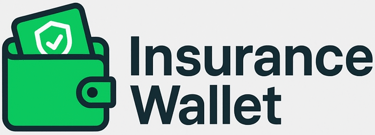🌩️ Understanding the Concept of Risk in Insurance
Introduction
Every human being faces uncertainty in life — our health, property, business, and even our income can change in an instant. We don’t know what tomorrow holds, and that uncertainty is what we call risk.
Insurance exists because risk exists. Without risk, there would be no need for insurance. But before we understand how insurance works, we must first understand what risk really means.
What is Risk?
In simple words, risk means the chance that something may not go as expected.
👉 If you plan a picnic, you expect a sunny day. But if it rains — your plan fails.
👉 If you open a shop, you expect sales and profits. But if there’s a flood, your goods may get damaged.
So, risk is the possibility of a bad outcome — a deviation from what you expected.
In insurance, we are only concerned with financial loss. Emotional losses like sadness or disappointment cannot be insured — only losses that can be measured in money.
📘 Insurance Definition of Risk:
“Risk is the possibility of an adverse deviation from an expected outcome, resulting in a financial loss.”
🎯 Types of Risk
Not all risks are the same. In insurance, we mainly talk about two categories:
1️⃣ Pure Risks
These are risks that can only result in loss or no loss — never a gain.
Examples:
A car accident
Fire in a building
Death due to illness
Theft or burglary
In all these cases, you either face a loss or nothing happens. There’s no chance of profit.
👉 These are the types of risks that can be insured.
2️⃣ Speculative Risks
These are risks where you can have loss, no loss, or gain — like in business or investments.
Examples:
Investing in the stock market
Starting a new business
Trading in foreign currency
Speculative risks are taken voluntarily to make profits. But because they can lead to profit or loss, insurers do not cover them.
🧭 Why Speculative Risks Are Not Insured
Insurers avoid speculative risks because:
They are voluntary and can encourage reckless behavior.
People share losses but not profits — that’s unfair.
They are unpredictable — no formula can estimate them.
If all such risks were insured, enterprise and competition would die out.
Hence, insurance only protects against pure risks — the kind that no one chooses voluntarily.
🛡️ Risk Management: Dealing with Risks
Insurance is only one part of Risk Management — the broader science of handling risks.
Risk management involves four main strategies:
1️⃣ Avoidance – Don’t take the risk at all.
Example: Avoid setting up a factory in a flood-prone area.
2️⃣ Mitigation – Take steps to prevent or reduce loss.
Example: Install fire extinguishers or seat belts.
3️⃣ Transfer – Shift the risk to someone else — like an insurance company.
Example: Buy a health or motor insurance policy.
4️⃣ Retention – Accept some risks yourself.
Example: A company setting aside funds for small damages.
Smart individuals and businesses combine all these methods to manage risks effectively.
💡 Real-Life Example
Imagine you own a textile shop.
Fire or flood could destroy your goods (Pure Risk).
Market demand could drop due to new fashion trends (Speculative Risk).
You can insure against fire and flood — because those are pure risks.
But you can’t insure against changing fashion trends — that’s speculative.
This simple difference defines what insurance truly covers.
✍️ Quick Recap
Risk = Uncertainty about future losses.
Insurance covers only Pure Risks.
Speculative Risks (profit/loss chances) are not insurable.
Risk Management = Avoid, Mitigate, Transfer, Retain.
Insurance = A smart way to transfer financial risk.
🧩 Key Takeaways for Agents
🔹 Always explain to clients that insurance doesn’t remove risk — it manages it.
🔹 Help clients differentiate between pure and speculative risks.
🔹 Use simple real-life examples while explaining insurance benefits.
🔹 Remember — risk is the reason insurance exists!
